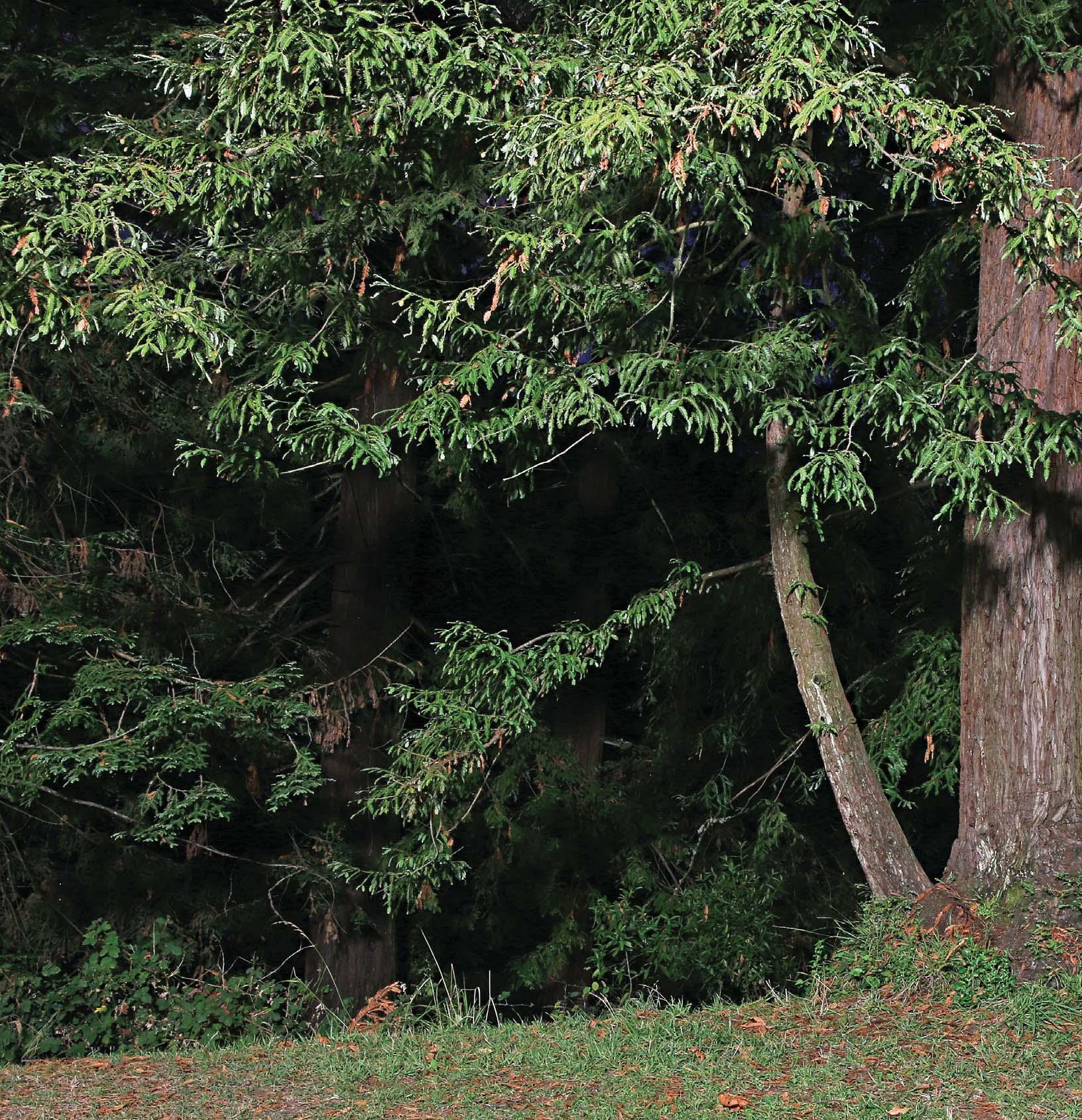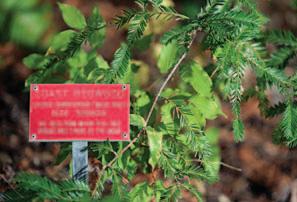
1 minute read
Astronomicalarbors
Theother moon tree—about 2miles north — is unmarked and harderto find. Just4feet tall when itwas relocatedfromaForest Service nurserytotheBerkeley parkin 1976, it nowoverlooks a meadow near Tilden’sEnvironmental Education Center.
Roosa’s treesarehealthy, O’Brien says.They’renourished by fog dripabsorbed through the needles, andpark rangershave supplemented them with extra water during the drought.
Roosa, who died in 1994, would have beenpleased bythe condition of the Berkeleyredwoods that will likelyoutlive all of the survivingApollo explorers.
Surrounding thegarden’s moon treeis the samevibrant green undergrowth thatdots redwoodforestsalongCalifornia’s North Coast: giant chainferns, leatherleaf ferns, sword ferns, large-leavedlupine, wood rose, Humboldt larkspur,salmonberry,Chamisso’shedge nettle. Its taller neighborsincludeaDouglas fir and an older redwood grove planted inthe1940s.
Although no formal list was kept, moon trees arescattered across theUnited States—from Oregonto Florida—and even as far as Brazil and Switzerland. InCalifornia, moon treeswere planted atHumboldt State, in Arcata; MissionPlazain San Luis Obispo; FriendlyPlazainMonterey;CapitolPark inSacramento; andseveralother locations.
NotallofRoosa’s seeds — whichincluded redwoods, firs, sycamoresand sweetgums— fared so well as they were gifted to parks and set roots around the United States. A loblolly pine planted atthe White Houseno longer stands, and Idahovolunteers this fallwerefightingto save aheat-stressed and bug-infested pine inBoise.
At left: Visitors tour theRegional Parks Botanic GardeninTilden. Center,clockwise fromtop: A moon tree,the redwood second from left, stands tall as asupermoon lunar eclipse peeks between the branchesof another tree at Tilden Regional Park; inthis long-exposure photo,the moon illuminates thick fog as deer roam the park; anew branch sprouts fromthe roots of a redwood tree;aplaque identifies a moon tree.


Man walks into abar.From there, thestory getsfuzzy. Makethat “stories.”There are multipletheories on where themartini,thatelegant cocktail of dry-wittedsophisticates, was born. Italy. NewYork. San Francisco.
Martinez, thecounty seat of Contra Costa, has the most credible claim. Make that “claims.” They all begin circa 1870,withagold miner fresh fromthe foothills and clutchingabag of goldnuggets walking into theRichelieu Hotel and asking bartender Julio Richelieu for somethingspecial.
Richelieu madewhat he called aMartinez Special —apotent blendofgin, vermouth, a dash ofbitters and an olive.Thegold miner lovedit.
“Thenamewas changed because after youhad afew,it came out‘martini,’”says Angelo Costanza, aMartinez-based attorney whoseparents wererestaurateurs in thecity fornearly half a century.“Martinez became known as the home ofthe martini.”

Insome versions, theRichelieu was locatedat414 FerrySt.,where theRoyal Thairestaurant now stands. Inothers, theRichelieu was atthe cornerofAlhambra Avenue and MasonicStreet, whereaplaque identifies the site as “Birthplaceofthe Martini.”
Insome versions, thegoldminer asksRichelieuforChampagne, only to be told none is available. Inothers heasksforwhiskey, whichhe chaseswith Richelieu’s improvisational genius. What’s indisputable is how thedrink became part ofthe city’sfabric— in September, Martinezexpanded itsannual MartiniFestival into a MartiniMonth.
“In the’40s,’50sand ’60s, there was the MartiniNavy,”saysTom Greerty,anattorney and Martinez city historian. “There wereno










